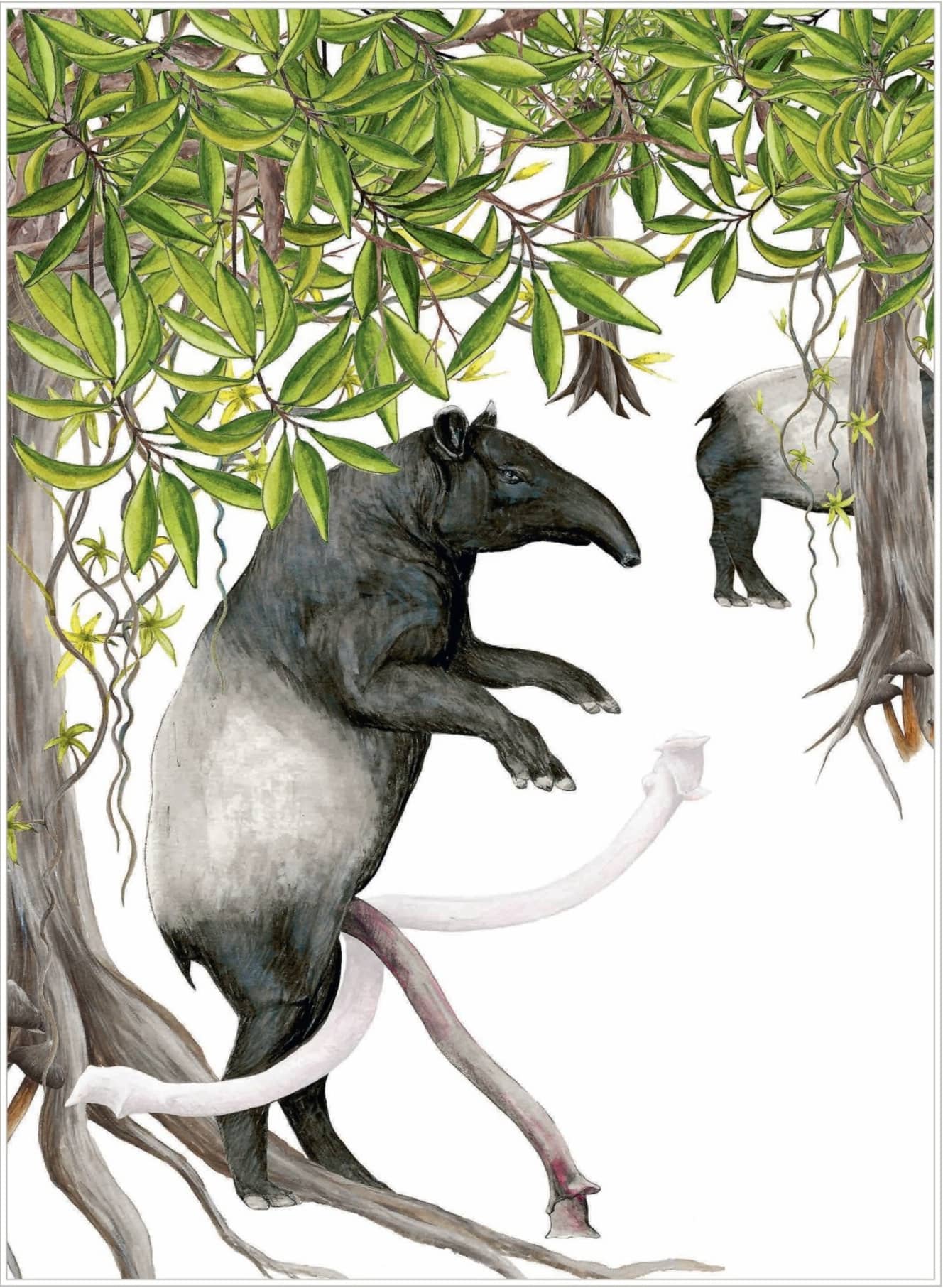From Moving Freely to Stabbing the Opponent’s Abdomen, The Remarkable Evolution of Male Animal Traits

Two flexible, sometimes grasping, and spiky objects. Would you believe that these are all about the male reproductive organs of animals?
Since life emerged on Earth 4 billion years ago, animals have evolved and adapted repeatedly to survive. The diverse anatomies and behaviors of each animal have evolved strategically to adapt to their environments. Among them, one of the most diverse in shape is the reproductive organs.
In “Biology and Sex: The Mystery of Optimization Strategies” (authored by Emmanuel Puybaret, translated by Tsuneo Nishioka, published by Kyuryudo), astonishing reproductive activities of 32 species, ranging from crocodiles and ostriches to slugs and lice, along with the optimized male reproductive organs and sexual behaviors in various forms, are explained with vivid watercolor and delicate pencil illustrations. Here are some examples of astonishing reproductive organs from among them.
The “S. pacificus” can move freely and grasp objects!
The male reproductive organs of the Malayan tapir, which lives in Southeast Asia including the Malay Peninsula, can move like tentacles. Normally, the genitalia are folded like a bellows and stored inside the body, but when the time comes, they can move freely to explore the genitalia of their female partners. This movement is said to be a technique for seduction and reproduction.
More useful are the reproductive organs of the African elephant. The elephant’s genitalia, which can grow up to two meters long as an adult, can not only pick up branches and fruit, but can also stand up, swat flies away, and even scratch its belly. It is like a “second nose,” and these dexterous reproductive organs are extremely useful for mating with these 4-meter-tall, 6-ton giants. Incidentally, the female’s reproductive organs are also said to be 3 m long, so she may not be able to perform her duties unless she is able to do so.
It’s like a drill!
Most birds do not have a penis because 97% of birds have a total discharge cavity, which consists of the intestinal tract, urethra, and reproductive organs, and males and females mate by attaching themselves to each other. However, swans, ducks, ostriches, and other birds mate during the breeding season with a well-developed penis.
Among them, competition among mallard males is fierce, as there are far more males than females. In order to gain as many breeding opportunities as possible, the males have “optimized” their reproductive organs by evolving a spiral, drill-like structure. From the human point of view, this is a ridiculous evolutionary evil in order to facilitate forced insertion into the female’s reproductive organs.
However, as a countermeasure, the female also evolved her vagina into a spiral shape facing the opposite direction of the male’s reproductive organs. This allowed them to avoid forceful penetration, but the story does not end there. In response, males have adapted by acquiring genitalia long enough to fit the female’s curved vagina. It seems that mating is a disaster for female ducks everywhere.
They pierce their mates’ bellies!
More violent cases exist than mallards. There are more violent cases than mallard ducks, such as bedbugs that engage in traumatic insemination. Traumatic insemination literally means that the male bed bug uses his needle-like genitalia to pierce the female’s abdomen, penetrate her exoskeleton, and inject his semen. The female’s reproductive organs are no longer involved, and this is not even forced intercourse, but “injury. Even so, the sperm eventually reach the ovaries thanks to a special organ in the female’s abdomen that is used in bed bug mating.
Male bed bugs can mate up to 200 times a day, and they try to mate as many times as possible to get as much sperm as possible into the female’s body. However, females can be pierced in the abdomen, which can cause wounds to fester and shorten their lifespan. Therefore, as females evolve, their abdomens gradually become harder and harder. Males, on the other hand, are evolving sharper and sharper reproductive organs. When it comes to this point, mating is now a battle.
Bones!
The human male organ, of course, has no bones, but apparently it is rather uncommon for mammals to have a bone called the “phallus bone”. Most primates, as well as bears, cats, dogs, seals, bats, and raccoons, have them.
The reason for this is apparently to prolong the insertion of the genitalia into the female’s reproductive organs, thereby denying competitors the opportunity to do so and ensuring successful fertilization. Among these, the walrus penis bone is the longest, at 63 cm, and is the heaviest relative to its size among mammals living today. A 12,000-year-old fossil of a walrus penis bone discovered in Siberia was 1.4 meters long.
Many species of female walruses also have a “phallus bone” on the inside of their genitalia. It is still a mystery why some species have a phallus bone and others do not, and why humans do not.
In addition, this book introduces the genital organs and sexual worlds of a wide variety of animals, including the “singing penis” of the little worm, the “detachable clitoris” of the blue mussel, the “homosexuality” of the bottlenose dolphin, and the “oral sex” of the little fruit bat. Compared to these, human sex seems surprisingly ordinary.





Biology and Sexuality: Mysterious Optimal Strategies” by Emmanuel Puidova, published by Guryudo.